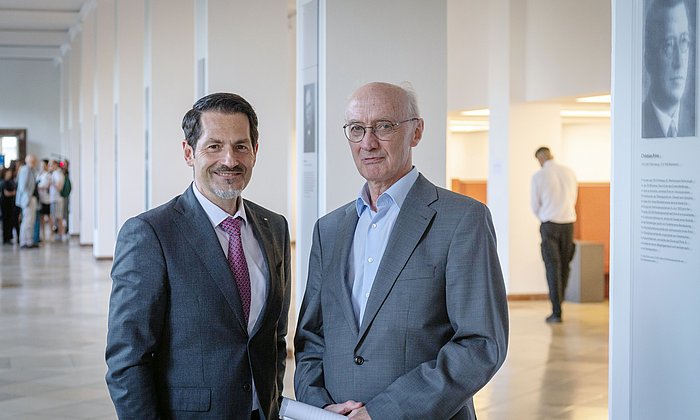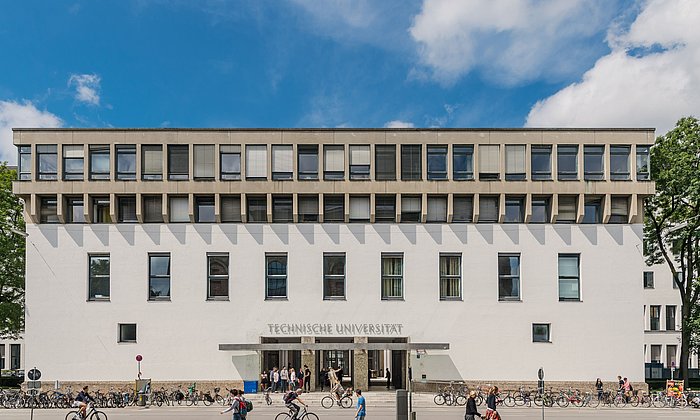Coming to terms with the past
Campus Weihenstephan commemorates persecuted university members

“Weihenstephan was already a research site of the Technische Hochschule München during National Socialism. That’s why it’s important to shine a light on the wrongdoing that occurred here as well, and to remember the people in Weihenstephan who were persecuted because of Nazi ideology,” says Prof. Winfried Nerdinger. He is an Emeritus of Excellence at TUM, the founding director of the Munich Documentation Center, and has long contributed his expertise to TUM’s coming to terms with the Nazi era. Together with the TUM Senior Excellence Faculty and the TUM Center for Culture and Arts, he initiated the commemorative space on the Weihenstephan campus.
Commemorative plaques in the central lecture hall building at the Maximus-von-Imhof-Forum shed light on this period. They honor four professors who conducted research and taught at the Weihenstephan campus: Hans Raum (Professor of Plant Breeding and Cultivation), Anton Fehr (Professor of Dairy Farming), Carl Sachs (Associate Professor of Economics and Agricultural Policy), and Kurt Trautwein (Associate Professor of Theoretical Fermentation Physiology).
The student body aggressively targeted professors it deemed politically unreliable. Between 1934 and 1936, Professors Raum, Fehr, Sachs, and Trautwein were forced into retirement or dismissed. Although the university leadership initially emphasized these scholars’ professional qualifications to the ministry, the professors ultimately found no advocates—neither in the administration nor among the faculty.
A comprehensive effort to come to terms with the past
The commemorative space in Weihenstephan is part of TUM’s comprehensive coming to terms with its role during the Nazi period. In recent years, the university has removed names from buildings and rooms that had honored individuals compromised by their Nazi-era histories. Doctoral degrees that had been revoked from four Jewish graduates were symbolically reinstated. TUM has also distanced itself from honors conferred during the Nazi era.
In July 2024, TUM opened a commemorative space at its main campus on Arcisstraße in Munich to honor 17 university members who were dismissed and persecuted by the Nazi regime. The site also explains how the university was enlisted in preparations for war and outlines ideological and institutional changes.
"It’s always important to remember the injustices that have been committed, to stand against forgetting, and to reflect critically on our own willingness to show civil courage—not only as citizens, but also as scientists. We need that same courage in science to defend the freedom of research and teaching as one of our highest values," says Martin Klingenspor, Dean of the TUM School of Life Sciences.
- The Exhibition Catalogue „Die Technische Hochschule München im Nationalsozialismus“ (german) is freely available as a PDF: Publication
- History of TUM
- TUM Senior Excellence Faculty
- TUM Center for Culture and Arts
- Event report on the TUM School of Life Sciences website



